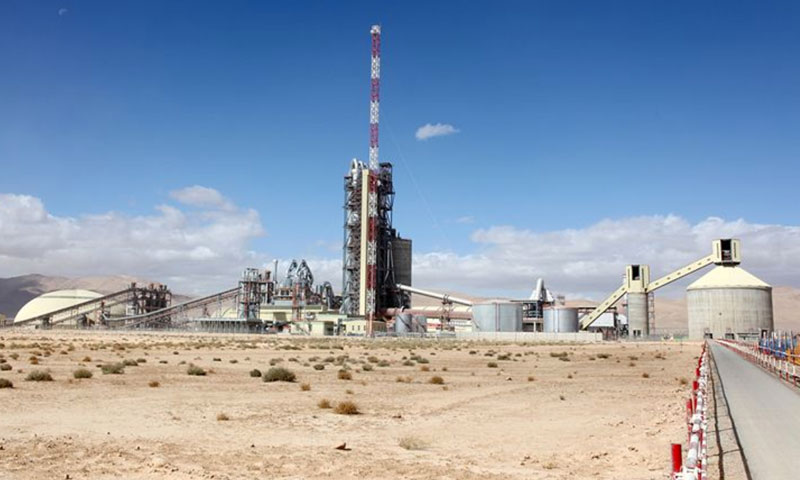



Besides its military significance, the “Syrian Desert” is also economically significant. This is justification enough for the confrontations and battles among the influential countries involved in the Syrian question that the region witnessed during the past three months aiming at controlling parts of Al-Badia.
The Badia includes large areas extending from the east of Suwayda, the south of Rif-Dimashq, and the countryside of Homs and Hama, to the eastern region (Deir ez-Zor).
“The battle of the Dunes” had more than one catalyzer, and the military argument is just a cover that is often explained by analyses that claim that he who controls the desert can have control over the whole region. However, because a very good percentage of the country’s natural resources is concentrated in al-Badia, especially oil and gas fields, the region has become very significant and transformed into an object for the greed of dominant countries.
There is one single argument that the conflicting parties in Syria (the states of Russia, America and Iran that support domestic and foreign groups) use to attack the region, and it has to do with fighting the “Islamic state” (ISIS). However, according to the Assistant Minister of Finance in the Syrian interim government and the chief economist in Daraa, Abdul Karim al-Masri, the economic benefit and the potential resources in the region, whether oil and gas wells, or solar energy, or other profitable activities such as agriculture and bird hunting, cannot be overlooked.
The oil fields in the Badia are considered to be the main fields in Syria that the country depends on in terms of local production, which was 380 thousand barrels of crude oil before the revolution in 2011, in addition to the existence of previous scientific studies which indicate the presence of promising oil wells in the region.
Syrian gas reserves are concentrated in the Palmyra region of the Badia, Qara in Western Qalamoun and the coast of Tartus and Baniyas. In case this gas is extracted, Syria would become the third gas exporter in the world, according to the German FERIL center for studies which is close to the Syrian regime. The Syrian gas reserves were estimated at 28.5 billion cubic meters.
The center said that three medium-sized gas fields located north of Palmyra are sufficient to supply Syria with electricity 24 hours a day for 19 years.
Al-Masri told Enab Baladi that “There are studies that say that Syria’s gas and oil reserves are concentrated in the Syrian Desert and the coast with 83 percent of the total Syrian reserves, whereas only 12 percent exists in the Syrian al-Jazeera (Raqqa, Deir ez-Zor, and Al-Hasakah provinces).
According to studies, the wells of the island will be exhausted by 2022, while the Badia and the coast oil fields will endure until at least 2051 if they start to be exploited next year.
The Syrian Economic Forum said in a report last June that ” the gas issue is one of the sensitive issues relating to the Syrian question as many studies, including those provided by the government of the Syrian regime, pointed out the existence of several oil basins containing gas and oil spreading in different areas in the Syrian desert and olong the Syrian coast as well, but they have not been explored yet due to many international interventions.
Besides the existence of oil and gas wells, Al-Masri pointed to the importance of installing solar panels in the Badia thanks to its vast lands that are always exposed to sunlight, which might generate energy and supply nearby areas with an extremely “valuable” alternative energy.
The attack on the Badia was started by the Assad forces and Iranian militias with Russian air support in an Iranian attempt to open a land crossing from Tehran to the Syrian coast through Iraq and the Badia aiming at finding a transportation route for its gas and crude oil products.
In July 2011, Iran signed an agreement with the Syrian regime and Iraq to construct a pipeline that crosses both countries to reach the Mediterranean Sea and then Europe and carry 110 million cubic meters of gas per day.
Iran is also trying to realize its dream of becoming an economic hub that connects East Asia to Europe and Africa by land lines through the Iran “Silk Road” Project, which was introduced by former President Hashemi Rafsanjani in the late 1980s and reintroduced in 2013 by Chinese President Xi Jinping who had the dream of Linking his country with Europe and Africa in a network of roads, one of which passes from Iran to Iraq and Syria, a project that was hailed by Tehran.
Russia, which has taken control of the natural resources in the Syrian coast through long-term agreements with the Syrian regime, has a vested interest in Iran’s realization of the pipeline ground passage, according to the Economic Forum, because it gives Moscow greater political and economic power by profiting from the passage when necessary and controlling the gas market and its marketing in EU countries.
The Iranian-Russian project collided with US and British interests that intervened in the region and established a military base in Al-Tanf, on the Syrian-Iraqi border, under the pretext of fighting the “Islamic state”.
Washington’s goal – eradicating Iran’s project – floated to the surface in US President Donald Trump’s speech at the Riyadh summit when he stressed the need to curtail and curb Iran’s project and carried with it also America’s economic desire to control the region’s resources. Historically, America has never entered a war that produced no economic benefit.
While the giants are playing their cards at war, the Syrians’ interests are off the table. The last thing these countries care about is the economic losses the Syrians will suffer for many years after they suck the blood off the country’s veins and exhaust its natural resources.
if you think the article contain wrong information or you have additional details Send Correction